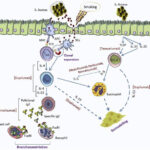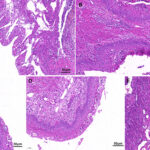Cystitis, a lower urinary tract infection (UTI) involving the bladder, is most commonly caused by Escherichia coli. However, Staphylococcus species, particularly Staphylococcus saprophyticus and Staphylococcus aureus, have emerged as significant uropathogens, particularly in certain demographic and clinical contexts.
Staphylococcus saprophyticus is a frequent cause of uncomplicated UTIs in sexually active young women, while Staphylococcus aureus typically represents hematogenous spread rather than ascending infection, raising suspicion of bacteremia when isolated in urine.

Epidemiology of Staphylococcal UTIs
- S. saprophyticus accounts for up to 10–20% of community-acquired cystitis in young females.
- S. aureus is more often isolated in hospitalized patients and those with indwelling urinary catheters.
- Methicillin-resistant S. aureus (MRSA) has been increasingly identified in nosocomial cystitis cases.
Pathogenesis of Staphylococcus Cystitis
Ascending vs Hematogenous Spread
- S. saprophyticus causes ascending infection from the urethra.
- S. aureus often reflects secondary seeding of the urinary tract via bloodstream.
Risk Factors for Staphylococcal Cystitis
- Female sex (especially in S. saprophyticus infection)
- Sexual activity
- Recent antibiotic use altering normal flora
- Urinary catheterization
- Immunosuppression
- Diabetes mellitus
- Prolonged hospitalization
- Invasive urinary procedures
- Hematogenous seeding from distant infection (S. aureus)
Clinical Presentation of Staphylococcus-Induced Cystitis
Common signs and symptoms include:
- Dysuria (burning during urination)
- Increased urinary frequency
- Urgency
- Suprapubic discomfort
- Hematuria (blood in urine)
- Foul-smelling or cloudy urine
Systemic symptoms (e.g., fever, chills) may suggest pyelonephritis or bacteremia, especially in S. aureus cystitis.
Diagnostic Evaluation
Urinalysis
- Pyuria (WBCs in urine)
- Bacteriuria (positive nitrites may be absent with gram-positive organisms)
- Hematuria
- Proteinuria (mild)
Urine Culture
- Colony counts >10⁵ CFU/mL confirm infection
- Differentiation of S. saprophyticus, S. aureus, or coagulase-negative staphylococci essential
- Antibiotic susceptibility testing (MSSA vs MRSA) is critical
Blood Cultures
- Indicated if S. aureus is isolated from urine to rule out hematogenous origin
- Particularly relevant in elderly or hospitalized patients
Antibiotic Treatment for Staphylococcal Cystitis
First-Line Antibiotics
| Pathogen | Recommended Oral Agents | IV Options for Severe Cases |
|---|---|---|
| S. saprophyticus | Nitrofurantoin, Trimethoprim-Sulfamethoxazole, Fosfomycin | Rarely needed |
| MSSA | Cephalexin, Amoxicillin-clavulanate | Cefazolin, Nafcillin |
| MRSA | Doxycycline, Linezolid, TMP-SMX | Vancomycin, Daptomycin |
- Duration: 5–7 days for uncomplicated cases; 10–14 days for complicated infections or S. aureus bacteriuria
Fluoroquinolones may be considered but are generally reserved due to resistance and adverse effects.
Recurrent Staphylococcal UTIs and Complications
Recurrence Factors
- Persistent perineal colonization
- Inadequate initial treatment
- Foreign body presence (e.g., catheter)
- Underlying urological abnormalities
Complications
- Pyelonephritis
- Renal abscess
- Urosepsis
- Metastatic infection from S. aureus bacteremia (e.g., endocarditis, osteomyelitis)
Prevention of Staphylococcus-Related UTIs
- Proper perineal hygiene
- Avoidance of unnecessary catheter use
- Routine catheter care protocols
- Judicious antibiotic prescribing to preserve flora balance
- Prompt treatment of skin or soft tissue infections to prevent hematogenous spread
- Decolonization strategies (mupirocin, chlorhexidine) in recurrent MRSA carriers
Staphylococcus Cystitis in Special Populations
Pregnant Women
- S. saprophyticus can cause cystitis with risk of progression to pyelonephritis
- Beta-lactams are preferred due to safety profile
Elderly Patients
- Higher prevalence of S. aureus bacteriuria associated with indwelling catheters or comorbidities
- Increased risk of complications and need for systemic evaluation
Immunocompromised Hosts
- May present atypically
- Empirical therapy should include MRSA coverage if suspected
Staphylococcus cystitis, though less common than gram-negative etiologies, poses unique diagnostic and therapeutic challenges. While S. saprophyticus typically causes uncomplicated community-acquired infections, S. aureus cystitis is frequently a marker of more serious systemic disease. Prompt recognition, accurate microbial identification, and tailored antimicrobial therapy are essential in optimizing outcomes and preventing recurrence or complications. Preventive strategies, especially in high-risk patients, remain central to long-term management.

